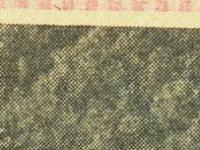This lesson asks students to complete an inquiry-based analysis of news articles from the papal visits to Philadelphia, in 1979 and 2015, examining them within the context of global issues such as the human rights, poverty, the environment, and materialism. When looking at the articles surrounding both visits, students should think about the point of view of the authors, the ideas presented by the popes, and the interpretation of those ideas.
The articles span from the first visit of Pope John Paul II in 1979 to more recent articles remembering the first visit and articles on Pope Francis in 2015. Engage students by asking questions throughout such as, “How does this interpretation fit the larger context of history both then and now, and how was it influential?” Be sure to compare and contrast how the visit was written about in 1979 with contemporary news accounts to see if or how coverage has changed. These articles offer an opportunity to discuss a diversity of opinions within the community and to tie political and social history to literacy standards.


